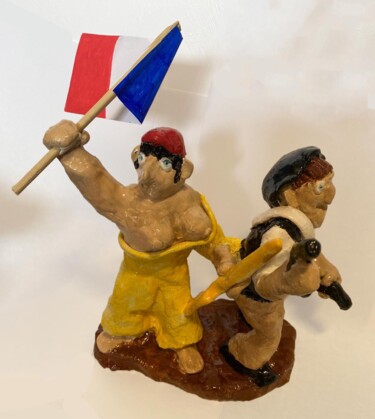33,647 Original artworks, Limited Editions & Prints:
Artistic movement inseparable from the name of the French artist Jean Dubuffet, art brut continues to enjoy a certain success in the world of contemporary art, as evidenced by the rich production of the artists of ArtMajeur.
Art brut, or outsider art, a term coined by the French artist Jean Dubuffet in 1945, designates this particular form of creative expression, mainly the work of self-taught artists, children, marginalized people or psychiatric patients, aiming to achieve a kind of consciousness of "difference".
In fact, the result of the production of this particular type of artists are very unusual and instinctive works, which, apart from particular styles or movements, are extremely raw and emotional.
What is the history of Outsider Art?
The great sensitivity and the strong admiration that Dubuffet nurtured and manifested towards the "purity" of the art of the marginalized developed from fundamental encounters with the French master.
In particular, Dubuffet's art brut was largely influenced in its main concepts by the work of two famous psychiatrists, namely Walter Morgenthaler and Hans Prinzhorn, who, fascinated by the artistic production of their patients, began to value it and to analyze, collect and document it.
Precisely, Dubuffet, who came into contact with these studies, was totally fascinated by them, to the point of believing that the art of the mentally ill could represent the purest form of artistic creation.
Also, one book in particular, Prinzhorn's Bildnerei der Geisteskranken, in which thousands of works of art made by mentally ill people in various European institutions were analyzed, influenced his view of art.
It was after reading this work that Dubuffet began his personal collection, including not only art created by the mentally ill, but also the output of eccentrics, children, misfits, and outcasts.
This collection, called "La Collection de l'Art Brut", was then donated by Jean Dubuffet to the city of Lausanne (Switzerland), where it is still being developed today. The works presented, in the context of permanent or temporary exhibitions, aim to encourage visitors to think about and understand these artists who are not really artists.
What are the most common techniques of the Outsider Art artistic movement?
In reality, there are no representative techniques of outsider art, because each artist in the movement tends to express their inner self autonomously, following their most natural, simple, direct and instinctive tendency. Indeed, works can be created on a wide variety of mediums, such as paper, cardboard, cardboard, wall, canvas, copper and glass.
However, certain recurring stylistic characteristics are frequently found in the work of this type of artist, such as the motifs and particular design methods, which are very obsessive and repetitive.
Probably, these ways of approaching art reveal both a deep sensitivity to the passage of time and a desire to generate a kind of order in an often problematic and chaotic interiority.
As for the materials used, they are, like their creators, often unconventional, as if they wanted to connect more to the rich inner world of their creator.
Who are the famous artists and works?
Jean Dubuffet (1901 - 1985)
Jean Dubuffet, a famous French painter and sculptor, is considered the founder of the Art Brut artistic movement. After attending the Academy of Fine Arts in Le Havre, his hometown, for two years, he went to Paris in 1918 to take courses at the Académie Julian, an institution he would not leave until six months later. . During this formative period, Hans Prinzhorn's book on the art of the insane and the artistic production of primitive peoples exerted a strong influence on him. However, his decision to become a painter did not become final until 1942, during which time he was largely influenced by the expressionist master Paul Klee. But it was from 1945 that his true path began, a period during which Dubuffet theorized and introduced the concept of art brut. Always in tune with this artistic current, he founded in 1947, with André Breton, Paulhan and Drouin, the "Compagnie de l'art brut". It is precisely in these last projects that the thought of Dubuffet appeared with force: to free oneself from the artistic tradition to seek an original creativity capable of tracing a new path for art.
Adolf Wölfli (1864 - 1930)
Adolf Wölfli, Swiss painter and main representative of Art Brut, was largely marked by the unpleasant events of his childhood, shattered indelibly by the presence of a violent father and the premature death of his mother. These unpleasant events, added to the ill-treatment that the young man suffered during his work in the camps, led the boy to present serious behavioral problems, so much so that he was first imprisoned, then, once his proven schizophrenic state, interned in the Waldau asylum (Switzerland), where he will remain until the end of his days. It was in the psychiatric hospital that the artist consoled himself by drawing, gradually becoming aware of his talent, which would be strongly encouraged and valued by the psychiatrist Walter Morgenthaler. Finally, it is worth highlighting how the artist has produced, during his thirty years of activity, 1,300 drawings, several notebooks of writings and a gigantic biography of no less than 25,000 copies (The legend of Saint Adolf) , works that are mainly in the Museum of Fine Arts in Bern.
Henry Darger (1892 - 1973)
Henry Darger, American writer and illustrator, is best known for his fantastical manuscript, which, titled The Realms of Unreal, is lavishly illustrated with some of the best examples of Outsider art done in watercolor. Regarding the life of the artist, Darger, after losing his mother at the age of four, lived with his caring father until the latter, aged and disabled, was taken to a retirement home. After this episode, he first ended up in a Catholic asylum for young people, then was transferred to a mental asylum, because he was declared mentally ill. The suffering of this confinement has been largely sublimated in the literary work Les filles de Vivian. In 1908, Darger manages to escape from the psychiatric hospital, but the taste of his freedom is marked by a strong existential monotony.
Howard Finster (1916 - 2001)
Howard Finster, American Baptist artist and minister, claimed to have been inspired by God to spread the gospel through his artistic creation, including outsider, naïve, and visionary artwork. Finster's artistic research became known to the general public in the 1980s, when he designed the album covers of the famous American groups REM and Talking Heads. As far as the artist's private life is concerned, Finster, who was born in Alabama and grew up on his large family's farm, had his first vision at the age of thirteen, an extremely illuminating episode that led to his dedication to preaching. As for his artistic career, he devoted himself to the construction of museums intended to collect and exhibit the specimens of what humanity has created, such as the Plant Farm Museum, as well as the production of sacred art, portraits and pop culture icons.
Discover original contemporary Outsider Art Artworks on ArtMajeur
Original contemporary Outsider Art is a genre of artwork that is created by self-taught and untrained artists who are not part of the traditional art world. These artists have a unique style that is often characterized by bold colors, abstract shapes, and unconventional materials. Outsider Art is created on a variety of supports, including canvas, paper, and even found objects. The materials used in this type of artwork are just as diverse, ranging from paint and charcoal to fabric and metal. What makes Outsider Art unique is its raw and unpolished nature.
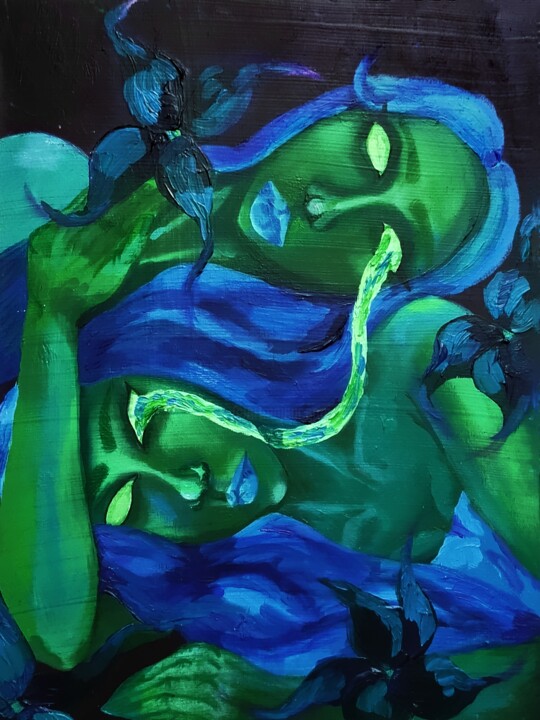
©2024 Vnetakta
Origins and History
Outsider Art, also known as Art Brut, is a term used to describe artworks created by individuals who are not part of the mainstream art world. These artists are often self-taught and create works that are raw, intuitive, and authentic. The origins of Outsider Art can be traced back to the late 19th century when artists such as Henri Rousseau and Vincent van Gogh were creating works that were not accepted by the art establishment of their time.
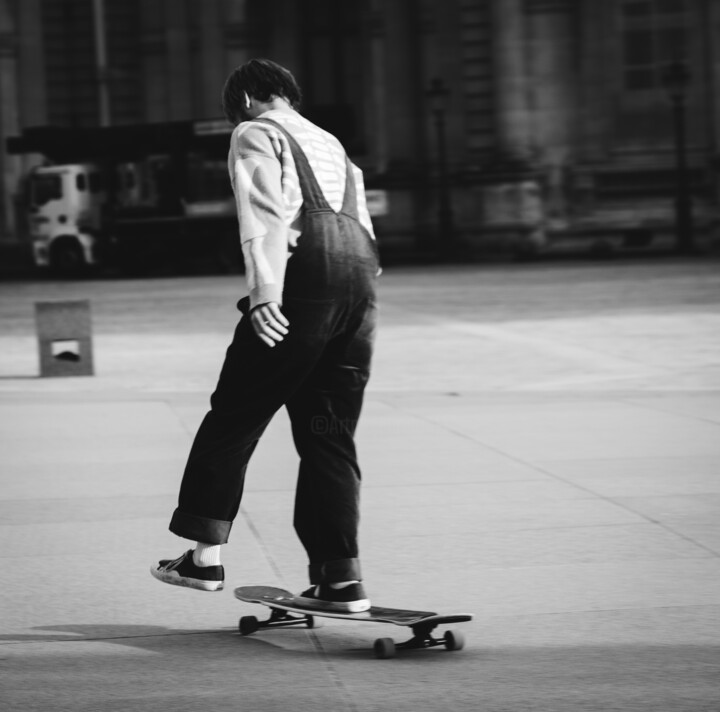
©2023 Théo Antonin
Evolutions of theses works in the contemporary art market
The evolution of original contemporary Outsider Art artworks has been fascinating to observe.
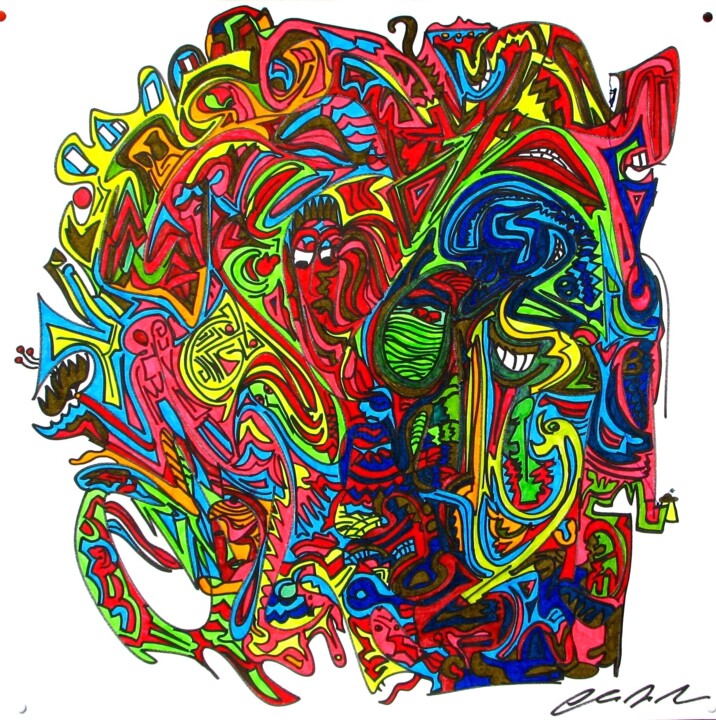
©2007 Claudio Mario Andrea
Related Famous Artists
Contemporary Outsider Art has become increasingly popular in recent years, and there are several artists who have gained recognition for their work in this genre. One notable artist is Joe Coleman, who is known for his detailed and often disturbing portraits of historical figures and cultural icons. His work explores themes of mortality, spirituality, and the human condition.
Another artist who has made a name for herself in the world of contemporary Outsider Art is Judith Scott. Scott’s work is characterized by her use of found objects and textiles to create intricate sculptures that explore themes of isolation, communication, and personal identity. Her work has been exhibited in galleries and museums around the world.
Mark Hogancamp is another contemporary artist whose work in the Outsider Art genre has gained widespread attention. Hogancamp is known for his intricate and detailed dioramas, which he creates using miniature figures and props. His work explores themes of trauma, memory, and recovery, and has been the subject of several documentaries and exhibitions.
Other notable contemporary Outsider Art artists include Darger, whose work explores themes of childhood innocence and trauma, and Henry Darger, who is known for his intricate and detailed illustrations of a fantastical world that he created in his own imagination. Each of these artists brings a unique perspective and vision to the world of contemporary Outsider Art, creating powerful and thought-provoking works that challenge our perceptions of art and the human experience.

©2022 Véronique Attia
Notable original contemporary Outsider Art artworks
One of the most recognizable Outsider Art pieces is "The Throne of the Third Heaven of the Nations’ Millennium General Assembly" by James Hampton, created in the 1950s-1960s. Hampton spent over 14 years constructing this elaborate, throne-like sculpture out of aluminum foil, cardboard, and other found materials. It is an impressive and intricate work, featuring religious imagery and symbols, and is considered a masterpiece of folk art.
Another notable Outsider Art piece is "Untitled (Cowboy)" by Martin Ramirez, created in the 1950s. Ramirez, who was diagnosed with schizophrenia and spent much of his life in mental institutions, created this work using found paper and crayons. It is a striking image of a cowboy on horseback, surrounded by intricate patterns and designs. Ramirez’s work is highly regarded for its intricate detail and unique style.
"St. EOM’s Pasaquan" is another well-known Outsider Art piece, created by Eddie Owens Martin in the 1950s-1980s. Martin transformed his family’s farm in Georgia into a sprawling, colorful art installation featuring sculptures, murals, and other works of art. The site is an otherworldly and mystical place, filled with vibrant colors and intricate designs.
"Untitled (Self-Portrait)" by Henry Darger is a haunting and disturbing work, created in the early 20th century. Darger, who was a recluse and spent much of his life in poverty, created this massive, multi-volume work of art featuring thousands of pages of text and illustrations. The self-portrait is a striking image, featuring a young girl with piercing blue eyes and a look of sadness on her face.
Finally, "The Grotto of the Redemption" is a stunning work of Outsider Art created by Father Paul Dobberstein in the early 20th century. Dobberstein spent over 40 years creating this elaborate series of grottoes and shrines out of local stones and other materials. The site features intricate carvings and sculptures depicting scenes from the Bible, and is considered one of the most impressive works of folk art in the world.
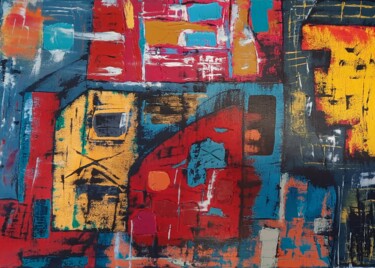
Florence Grammond
Oil on Canvas | 19.7x27.6 in
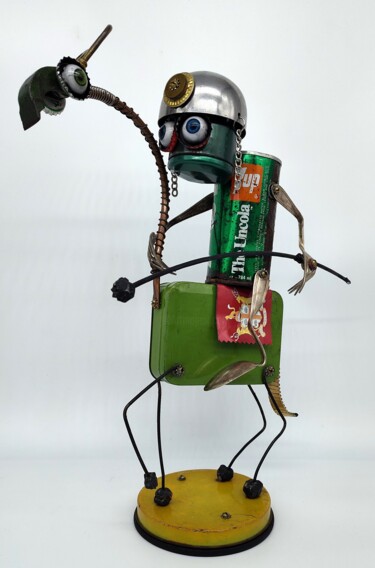
Branimir Misic
Sculpture - Metals | 16.9x13.8 in
































